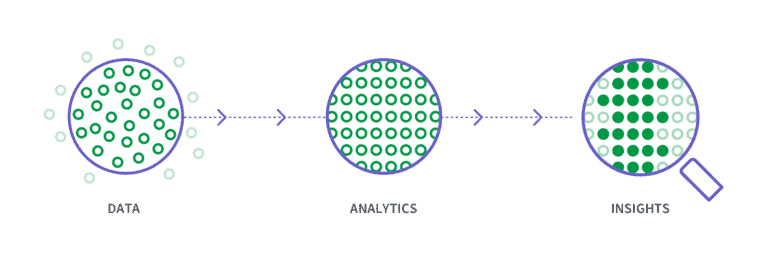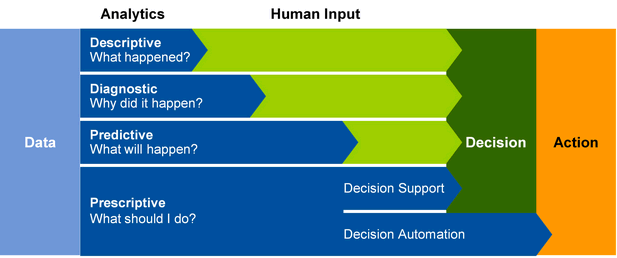In today’s educational landscape, data is becoming increasingly important in helping educators identify and address student needs, improve instruction, and measure student learning. By unlocking the power of student data, schools and teachers can more effectively and efficiently provide targeted instruction, personalized learning, and targeted interventions.
In this blog post, we will discuss what student data is, the benefits of unlocking its power, examples of how it can be used for teaching and learning, strategies for collecting and analyzing data, student information systems and data management, key components of student information systems, data analysis techniques for enhancing teaching and learning outcomes, best practices for data analysis in student information systems, tools and resources to assist with data collection and analysis, and a conclusion.
What is student data?
Student data is any type of data that is collected from students and used to inform instruction, assess learning, and measure student performance. This data can include student attendance, grades, test scores, behavior, and other factors that can help teachers and administrators better understand students and their needs. Student data is used to inform the teaching and learning process and to help educators make decisions about instruction and interventions.
Benefits of unlocking the power of student data
By unlocking the power of student data, teachers and administrators can more effectively and efficiently provide targeted instruction, personalized learning, and targeted interventions. Student data can provide insight into student learning and help educators identify and address student needs. It can also help teachers track the progress of individual students and identify areas of strength and weakness. Additionally, student data can be used to evaluate the effectiveness of instructional strategies, interventions, and programs.
Examples of using student data for teaching and learning
Student data can be used in a variety of ways to improve teaching and learning outcomes.
For example, student data can be used to inform instruction and help teachers tailor instruction to meet the needs of individual students. It can also be used to assess student learning and measure student performance. Additionally, student data can be used to identify students who need additional support and provide targeted interventions.
Strategies for collecting, analyzing, and utilizing student data
In order to unlock the power of student data, educational institutions need to develop strategies for collecting, analyzing, and utilizing data. Here are some tips for doing so:
- Collect data from multiple sources: Student data should be collected from a variety of sources, such as student information systems, surveys, and assessment tools.
- Use data analysis tools: Data analysis tools can help educational institutions visualize data and gain insights.
- Develop data-driven strategies: Data should be used to inform educational strategies and initiatives.
- Leverage data to improve teaching and learning: Data should be used to identify areas where students are struggling and create targeted interventions.
- Measure the effectiveness of initiatives: Data should be used to measure the effectiveness of educational initiatives and make adjustments as needed.

Student information systems and data management
Student information systems (SIS) are computer systems used to store and manage student data. These systems allow schools to collect, store, and analyze student data. SIS can also provide schools and teachers with access to data in real-time and allow them to more effectively monitor student progress and performance.
To ensure the accuracy and integrity of data, schools should have a system in place to collect and manage data. Schools should also have policies in place to ensure data is collected, stored, and accessed in a secure manner. Additionally, schools should have policies and procedures in place to ensure data is accurate and up-to-date.
Ready to unlock powerful insights by tapping into data you didn’t even know you had?
Key components of student information systems
Student information systems typically have four key components: data collection, data storage, data analysis, and data utilization.
- Data collection is the process of collecting and entering data into the system. Schools should have systems in place to collect data from multiple sources and enter it into the system.
- Data storage is the process of storing data in the system. Data should be stored in a secure manner to ensure the accuracy and integrity of data.
- Data analysis is the process of analyzing data in order to identify trends and patterns in student performance. Schools should have systems in place to analyze data in order to identify areas of strength and weakness and inform instruction.
- Data utilization is the process of utilizing data to inform instruction and improve teaching and learning outcomes. Schools should have systems in place to utilize data to inform instruction and measure the effectiveness of instructional strategies, interventions, and programs.

Data analysis techniques for enhancing teaching & learning outcomes
Data analysis is the process of extracting meaningful insights from data. This can be done in a number of ways. Here are some common data analysis techniques that can be used to enhance teaching and learning outcomes:
- Descriptive analytics: Descriptive analytics involves analyzing data to identify patterns and trends. This can help identify areas where students are struggling and areas where they are excelling.
- Diagnostic Analytics: Diagnostic analytics can help to uncover the root causes of trends and correlations between variables, and can be used to identify anomalies, detect patterns, and determine relationships between different data sets.
- Predictive analytics: Predictive analytics involves using data to make predictions about student performance. This can help develop targeted interventions and personalized learning plans.
- Prescriptive analytics: Prescriptive analytics involves using data to recommend specific actions. This can help educators design better learning experiences and make informed decisions about teaching and learning initiatives.

Best practices for data analysis in student information systems
In order to maximize the effectiveness of data analysis in student information systems, it is important to follow best practices. Here are some tips for doing so:
- Collect data from multiple sources: Data should be collected from a variety of sources, such as student information systems, surveys, and assessment tools.
- Use data analysis tools: Data analysis tools can help educational institutions visualize data and gain insights.
Develop data-driven strategies: Data should be used to inform educational strategies and initiatives. - Leverage data to improve teaching and learning: Data should be used to identify areas where students are struggling and create targeted interventions.
- Measure the effectiveness of initiatives: Data should be used to measure the effectiveness of educational initiatives and make adjustments as needed.
- Utilize privacy and security protocols: Data should be stored in a secure manner and only accessed by authorized personnel.
Tools and resources to assist with data collection and analysis
There are a variety of tools and resources available to assist with data collection and analysis. Schools may want to consider using student information systems (SIS) to collect, store, and analyze data. Additionally, there are a variety of data visualization tools available to help schools and teachers identify trends and patterns in data. Finally, schools may want to consider using data dashboards to view data in real-time and monitor student progress and performance.
Conclusion
Student data is an invaluable resource for schools and teachers. By unlocking the power of student data, schools and teachers can more effectively and efficiently provide targeted instruction, personalized learning, and targeted interventions. To effectively utilize student data, schools and teachers must have effective strategies for collecting, analyzing, and utilizing data. Additionally, schools should have a system in place to collect and manage data and have best practices in place for data analysis. Finally, there are a variety of tools and resources available to assist with data collection and analysis. By utilizing student data, schools and teachers can improve teaching and learning outcomes and ensure students are receiving the best possible education.
Ready to unlock powerful insights by tapping into data you didn’t even know you had?





